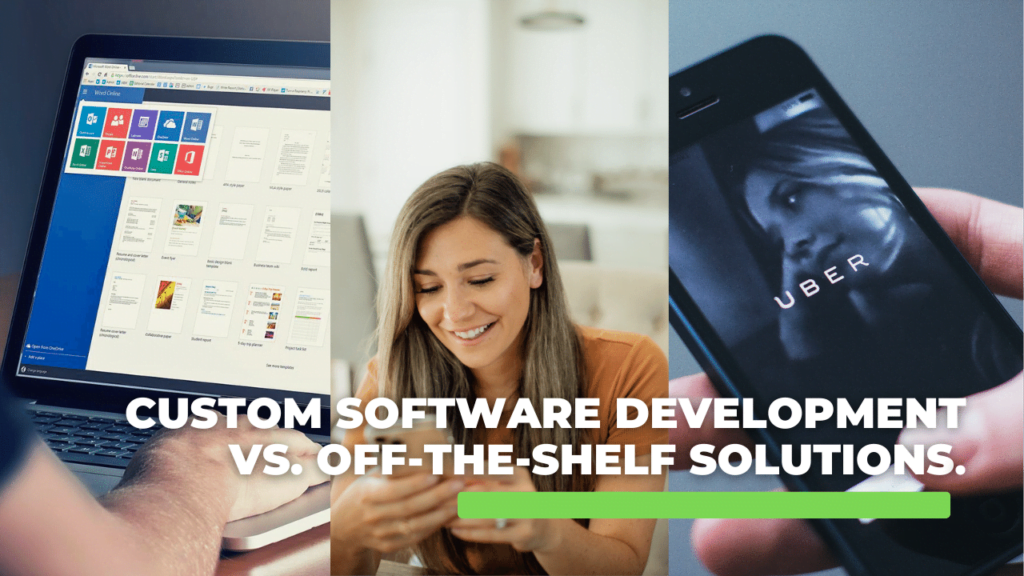In 2024, No-Code app builders are redefining the landscape of app development. The days when coding expertise was essential for crafting digital solutions are behind us. Now, anyone with an idea and a dream can bring it to life as a functional app with these cutting-edge platforms.
In this article, we will explore the top no-code app builders of 2024, showcasing their unique features and user-friendly interfaces. These tools are not just about creating apps; they’re about opening the door of app development to everyone.
Should I Use a No-Code App Platform?
In today’s digital-centric world, no-code app builders provide a swift and economical solution for app creation. They offer a super-quick and wallet-friendly way to create apps. Perfect for all the dreamers out there—entrepreneurs, small business owners, and anyone full of great ideas—but maybe not so much on the techy side. These no-code platforms equalize the playing field, enabling you to make your mark in the digital world without the significant time and financial investments usually required for conventional app development.

How Do I Choose a Low-Code App Builder?
When it comes to no-code app building, it’s all about three key steps:
- Setting Up Your Database: This is where all the info your users put in and pull out of the app lives.
- Designing the User Interface: Here’s where you get creative, designing the screens, buttons, and fields that your users will see and use.
- Crafting the App Logic: Simply put, this is about deciding what happens when users do something in the app, like “if the user hits the ‘Open’ button… let’s show them a pop-up.”
The best platforms turn app building into a visual journey. You can assemble your app exactly as you imagine it, without getting tangled up in coding or complex computer logic. These tools are fantastic not just for beginners but also for experienced developers. They streamline the basic tasks, freeing up time for the pros to focus on more complex coding puzzles.
So, what did we look for while testing out these no-code apps?
- Truly No-Code: That’s right—no HTML, CSS, or JavaScript. You won’t have to type a single line of code unless you want to.
- User-Friendliness: These tools are super easy to get the hang of. They’re intuitive, run smoothly, and are pretty much error-free. Remember, the simpler tools might not have all the fancy features of the more complex ones.
- Support and Learning Resources: A good help center is just the start. We looked for platforms with excellent starter guides, videos, and other resources to help you learn and troubleshoot as you build.
- Flexibility: Whether it’s a personal project or a big enterprise app, these platforms have got you covered for all kinds of features and functions.
- Community Support: Sometimes, you need a little help from your friends. The best platforms have active forums and creators online, so you can learn at your own pace, maybe with a coffee in hand.
Looking For An IT Partner for Your No-Code App project?
If you’re eager to build an app but not sure where to begin, TopSquad is here to help with our no-code and low-code services. As a leading partner in mobile app development, we understand what our clients need and provide the perfect solutions. Our team excels in no-code and low-code development, transforming your ideas into reality without the complexity of traditional coding. We protect your innovative concepts with NDA security, ensuring your privacy and security are always a priority. Transparent pricing means no surprises – you’ll know exactly what to expect. Plus, our commitment includes extensive technical support, guiding you every step of the way. Count on us for on-time delivery, ensuring your project is finished without delay and with the ease of no-code and low-code solutions.
Here is the list of the top-notch no-code app builders that we pick for you, whether you are enhancing a personal project or launching an exciting new SaaS product:
Top No-code App Builders for Newcomers
Softr: A User-Friendly App Builder for Beginners and Beyond

Pros of Softr:
- Incredibly user-friendly, perfect for getting started quickly.
- Offers a wide array of handy templates to kickstart your project.
Cons of Softr:
- Somewhat limited when it comes to complex logic operations.
Despite its straightforward appearance, Softr is more than meets the eye. It might not have the intricate look typically associated with powerful apps, but the variety and customization options available for building are impressively extensive.
Navigating Softr’s user interface is a breeze. There’s no constant need to refer back to the documentation when assembling your first app prototype:
- On the left side of the screen, you’ll find major app settings, options to add pages, manage users, and select visual themes.
- The central area is your canvas, where you’ll layer blocks to construct your page, including both static blocks (ideal for landing pages and feature sections) and dynamic blocks (great for displaying database data or embedding simple forms).
- Clicking on a block brings up its settings on the right, allowing you to tweak content, layout, and interaction for each block.
- At the top, adjust the canvas width for different devices like desktops, tablets, or smartphones, and access controls to preview or publish your app.
- For data sources, Softr supports Airtable (with a free plan) and Google Sheets (also free). Integration is straightforward, although many templates seem to default to Airtable. You can change this later in the settings.
Get started quickly with Softr Academy, or watch a 10-minute beginner video
Softr Price: Free plan available; paid plans start at $29/month.
Top App Builder for User-Friendly Experience
Bubble: A Dynamic and User-Friendly App Builder

Pros of Bubble:
- Ability to build nearly any type of app.
- Ideal for creating prototypes and Minimum Viable Products (MVPs).
Cons of Bubble:
- Pricing is based on workload demands.
Bubble features its own unique visual programming language, balancing ease of use for beginners with the sophistication of low-code platforms. It offers comprehensive control over your app’s appearance, data structure, and performance, making Bubble a top choice for both prototypes and scalable final products. Its robustness has even led some no-code agencies to rely on it exclusively for their client projects.
Working in Bubble feels like a mix of familiar tools: you build the UI with controls akin to Canva, manage data in a way that resembles Excel, and set up logic through intuitive, workflow-based steps. Although there’s a learning curve, it’s engaging and rewarding. You quickly grasp the basics, giving you the confidence to start building. Soon enough, you’ll encounter a challenge that propels you to seek answers in forums or YouTube videos. Through experimentation and research, you’ll overcome hurdles, gain new skills, and pick up speed in your development process.
One of Bubble’s biggest strengths is its vibrant community. There’s an abundance of resources for getting started, including detailed video tutorials, introductory courses, and written guides. For a more accelerated learning experience, you can opt for personal coaching or join a development boot camp.
If you’re looking for an app builder that offers flexibility and the ability to implement advanced logic, Bubble is a strong contender. The journey might have its ups and downs, especially for beginners, but the end result is a robust app and a wealth of new skills to continuously enhance it.
Get started quickly with Bubble Academy or watch the three-hour course.
Bubble price: Free plan available; paid plans start at $32/month.
Best No-code Mobile App Platform
Glide: A Streamlined App Builder for Eye-Catching Mobile Apps

Pros of Glide:
- Simplifies creating visually appealing apps.
- Easily install apps on your computer or smartphone.
Cons of Glide:
- Limited capacity for complex logic.
Glide shines brightest for mobile app development, thanks to its layout and functionality designed for mobile devices. You’ll love that there’s little need for visual adjustments – Glide apps look great right from the start.
In Glide, each page is termed a ‘tab’, and you can choose from eight different layouts, like swipe, checklist, or cards, each defining the tab’s look and function. The ‘details’ layout is particularly versatile, allowing full customization with components such as date pickers and buttons.
A standout feature of Glide is the ease with which you can install the apps you create on both computers and phones. A few clicks, and you have a progressive web app icon on your device. This setup is ideal for quick testing, sharing, and distributing your app. If your goal is to get your app on the App Store or Google Play, Glide offers a service to streamline the preparation for the approval process.
Get started quickly with Glide University.
Glide price: Free plan available for individuals; paid plans start at $25/month.
Best no-code app builder for flexibility
Bildr: A Visually-Driven and Versatile App Builder

Pros of Bildr:
- Offers a highly visual approach to app building.
- Equipped with numerous features that save time and effort.
Cons of Bildr:
- Can experience slow performance at times.
Bildr stands out for its versatility, excelling in creating web apps, Chrome extensions, progressive web apps for phones, and even blockchain-enabled apps for Web3. The most striking aspect of Bildr is its highly visual building process, making it a delight to use.
For those familiar with Figma, Bildr’s user interface will seem comfortably familiar. If not, think of it like a whiteboarding app such as Miro. It presents all the pages, screens, and layouts of your app on one expansive canvas, allowing you to easily structure user flows or funnels by rearranging elements as you see fit.
Building in Bildr is a tad more technical compared to other options on this list. It boasts a wide variety of draggable elements, from form containers to toggle switches, all customizable in terms of properties, style, events, and data. The design process mimics CSS logic, but without the need for actual coding, as the menus handle the configurations for you.
A particularly nifty feature of Bildr is the ability to create patterns. This means you can turn a frequently used group of elements – like a form or a section – into a reusable component for future use, enhancing both time efficiency and consistency in your app’s design.
Get started quickly in Bildr’s 101 course.
Bildr price: Free plan available; paid plans start at $29/month.
Top App Platform for No-Code Creation Across Multiple Platforms
FlutterFlow: A High-Control App Builder for Advanced Users

Pros of FlutterFlow:
- Offers in-depth control over both design and functionality.
- Can be fully extended with coding for more complex needs.
Cons of FlutterFlow:
- Has a notably steep learning curve.
Developed by ex-Google engineers, FlutterFlow is built on the Flutter framework, a popular open-source standard for app development across various platforms including Android, iOS, Windows, Mac, and even Linux.
FlutterFlow is impressively comprehensive. It boasts a vast array of elements to add to your canvas, and the element editor on the right side is packed with extensive settings options. In the app settings, you have control over everything from social media authentication to in-app subscriptions.
For new projects, FlutterFlow offers fully-featured templates to jumpstart your app. If you prefer more flexibility, you can browse through screen templates and add them as individual pages. When you need something unique, FlutterFlow’s AI engine can generate screens based on your prompts, leaving you to fine-tune the styling and functionality.
However, with great power comes complexity. FlutterFlow is challenging to master but incredibly robust in capabilities. It primarily integrates with Firebase, Google’s backend-as-a-service platform, handling all the backend needs of your app – from data storage and authentication to user experience enhancement.
While Firebase is powerful and scalable, it does come with a lot of developer terminology, assuming some technical know-how. Its database service, Cloud Firestore, uses a document model rather than a relational one, which might be a shift for those accustomed to relational databases.
If this excites you, jump right into FlutterFlow. It’s a deep dive into the world of app development, offering you valuable technical skills. If you’re still weighing your options, you might want to start with simpler platforms like Softr, Bubble, or Draftbit, build a foundation, and then shift to FlutterFlow for the advanced stage of your app-building journey.
Get started quickly with the introduction page, and follow this video to build your first app.
FlutterFlow price: Free plan available; paid plans start at $30/month.
Conclusion
Building an app without code should genuinely be a blast! By now, you’ve probably got a good sense of which platform suits your project best. Every app builder on our list comes with either a free plan or a ‘learn for free, pay when you launch’ option, so feel free to sign up and start playing around.
Here’s a friendly tip before you get started: set up two projects. One for the actual app you’re dreaming of, and the other as your sandbox for experimenting and learning. When you find yourself in a tricky spot with your main app, switch to your test project. Tinker around there to explore ideas and test out solutions. This approach not only sharpens your skills with the app builders but also keeps your primary project neat and tidy as you’re learning the ropes. Happy building!













